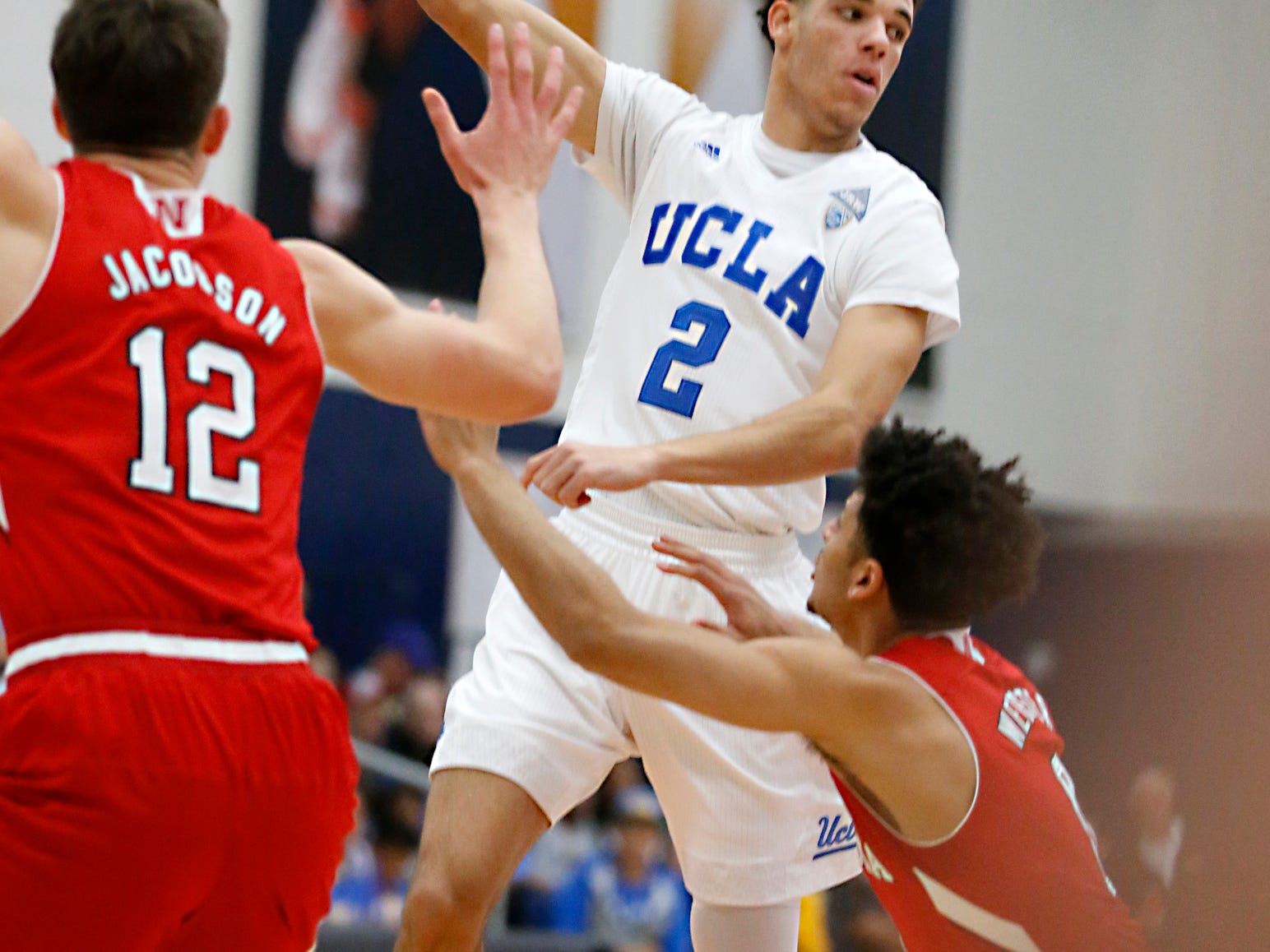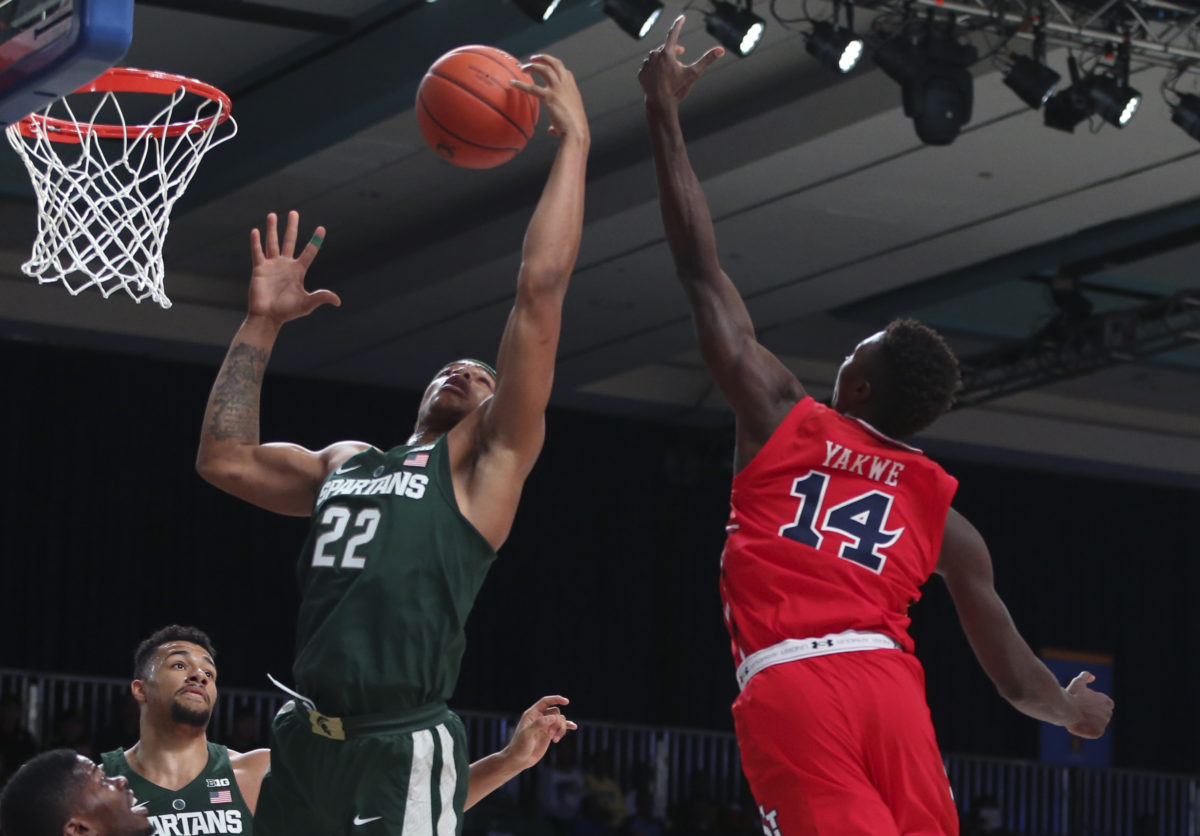Thanksgiving week is a time for family, food, football and of course basketball! Over the past week, dozens of NCAA teams have made apparent their strengths and weaknesses. Here are the five most important insights that fans can pull from the plethora of Feast Week tournaments:
The Tar Heels are Elite
North Carolina won a not so climactic Maui Invitational and moved to 7-0. They won it with an average margin of victory of 30 points. Granted, one of those games was against Division II opponent Chaminade. Despite that, they obliterated the two Division I teams they faced, Oklahoma State and Wisconsin, by 32 and 15 points respectively.
These are not normal, run-of-the-mill teams. Wisconsin was on the preseason top ten list for many behind Ethan Happ and Nigel Hayes. Jawun Evans leads the Oklahoma State Cowboys as an elite scorer at 24.7 points per game. Evans was one of only two Cowboys in double figures against the Tar Heels.
North Carolina currently has five players averaging over ten points per game. They can spread the ball well and do not rely on one player to stay above water. Returnees Kennedy Meeks, Joel Berry II, Justin Jackson and Isaiah Hicks have made it business as usual for Roy Williams. Five star recruit Tony Bradley is a nice addition at 10.7 points per contest and 6.3 rebounds.
This is a very long Tar Heel team that possesses the ability to frustrate defenses by tipping balls away. Kennedy Meeks and Isaiah Hicks dominate the boards, keeping teams from getting too many second chance points. Each also possesses the ability to protect the rim with good size and length. North Carolina is not one-dimensional. They are a threat to the two-headed monster of Duke and Kentucky come Phoenix in April. Their next test is Wednesday against Indiana.
Oregon is a Work in Progress
Dana Altman’s team was elite last year, achieving a one seed in the 2016 NCAA Tournament. With the big three returning for the Ducks, fans and analysts expected much of the same. With the early pre-season injury to Dillon Brooks, that has not been the case.
At the Maui Invitational, the Ducks dropped their first game to the Georgetown Hoyas. Rodney Pryor had 26 points and 10 rebounds for a stellar offensive performance against the Ducks. Despite that, Oregon’s problem has been offense, not defense. With Brooks still not at 100 percent, the team has struggled to put up points while holding every opponent below 70. That is including an overtime game against Tennessee.

Chris Boucher is the face of Oregon’s defense. He averages a whopping 3.0 blocks per game so far after setting the school record in 2015-16 with 110. As a side note, Boucher also leads the team with 15.0 points per game. That should change as Brooks transitions back into the line-up. As of now, Brooks has only 18.7 minutes per game. The most he has played all year is 25 against Tennessee which included overtime.
The bright spot in all of this is the development for the Ducks players in Brooks’ absence. Freshman Payton Pritchard has amassed a mountain of minutes, getting used to the collegiate game speed. His 29.7% three point mark is not the best but this should rise. As Pritchard’s role decreases and Brooks gets back into the swing of things, the freshman will see better looks with less defensive attention.
Despite the Ducks dropping a game to Georgetown and struggling against the Volunteers they showed some promise during Feast Week. Jordan Bell and Tyler Dorsey are each looking like their old selves, Brooks is settling in, and the Ducks have proven the ability to gnash their way to a win in a physical game. As Altman’s boys continue to mesh, watch for them to climb back up in the rankings.
Virginia Maintaining Identity without Austin Nichols
Examples of things that are certain in life: death, taxes and the Virginia Cavaliers as a defensive based team. Tony Bennett coaches this team year after year to the same sort of style. This year he has the added stress of doing it without key transfer Austin Nichols. Nichols played in only one game before being released by the team. He had previously violated team rules in October.

Regardless of the reasons for his dismissal, Virginia still looks like the top tier team that they have been over the past few years. Since Nichol’s discharge, the Cavaliers have been nothing short of brilliant. The team’s Feast Week exploits consisted of a dominating performance at the Emerald Coast Classic. They held their opponents to 42.3 points over the three game span of the tournament. While Grambling State is lesser competition, Iowa and Providence do not operate in the same category.
Better yet for the Emerald Coast champs are the two contests they played outside of Feast Week show their consistency. Virginia held Yale and St. Francis (NY) to under 40 points. Their points allowed average since Nichol’s left is 39.4 points.
The one detriment to the Cavaliers is that they do not score. Their 72.8 points per game through six games ranks them 214th in the NCAA. The only game which holds that average above water is the 90 point showing against Grambling State. Additionally only one player averages double figures in scoring: Darius Thompson at exactly 10.0 points per game. Virginia does play ten players, but they need someone to step up. Balance is great but they have no go-to player at this point. London Parrentes should turn into that player at some point this season.
UCLA is an Offensive Juggernaut
Okay, so with the exception of Texas A&M, UCLA has not exactly played anyone yet. Still, the offensive accomplishments and efficiency the team has put together is daunting. Putting up the numbers they have against anyone is impressive.

Lonzo Ball is the major recruit of this class for Steve Alford and he has not disappointed. Nothing short of brilliant, he averages 16.0 points, 9.1 assists and 5.3 rebounds per game. Nearly averaging a double-double as a freshman is impressive. What about having two freshman nearly averaging a double-double on the same team? T.J. Leaf was the other stellar recruit for the Bruins and he sits at 17.1 points (leading the team), 8.9 rebounds and 2.6 assists.
Additionally, four other players are averaging double-digit scoring figures totaling six for the team as a whole. Bryce Alford is second on the team with 17.0 points per game. He also is first in shots made from behind the arc with 19 and is shooting at 44.2%.
There is a laundry list of personal accomplishments, but the team’s overall statistics are the most astounding. Through six games the team is second in the nation in field goal percentage, sixth in three point percentage and first in total assists. They average 96.9 points per game. UCLA has 249 made field goals and 169 assists meaning they assist on 67.8% of their baskets. Not only are they extremely efficient, but they also share the ball well. That should be more than apparent with the aforementioned six players in double figures.
| NCAA Champions Points Per Game | |||
| Year | Team | Points Forced | Points Allowed |
| 2015-16 | Villanova | 78.0 | 63.6 |
| 2014-15 | Duke | 79.3 | 64.2 |
| 2013-14 | UConn | 71.8 | 63.2 |
| 2012-13 | Louisville | 74.5 | 58.8 |
| 2011-12 | Kentucky | 77.4 | 60.6 |
| *UCLA 96.9 Forced, 75.3 Allowed | |||
The one caveat would be the lack of defensive efficiency. Sure, the team does not rely on one player for its scoring. However, they currently allow 75.3 points per game. They may have a high powered offense, but their defense needs to improve when they do hit the tougher schedule. Generally, championship teams do not allow that many points.
The Bruins won a lackluster Wooden Legacy tournament during Feast Week. The only game that caused them any trouble was the grind-it-out match-up Texas A&M. The Aggies have some surprising new faces contributing, but are not of the same caliber as the Bruins. December 3rd they will face Kentucky in Lexington. This will be the first true test for Alford and company.
Michigan State is Still Difficult to Trust
Tom Izzo’s teams are the epitome of March basketball. Right now they are searching for a legitimate identity. Between a rough early schedule and some early individual struggles the Spartans they have yet to establish consistency.
Michigan State started off the year 0-2 after a last second loss to Arizona and a less than stellar performance against Kentucky. After a 100 point performance against Mississippi Valley State, the Spartans won a controversial game against Florida Gulf Coast 78-77.

Tom Izzo’s squad spent their Feast Week at the Battle 4 Atlantis. They took down St. John’s 73-62 to start. They were then dominated by Baylor 73-58. Miles Bridges was the only player in double figures for the Spartans with 15 points. Bridges is the highest rated member of a stellar Spartan recruiting class. Bridges has had some up and down games, including struggles against Kentucky and Florida Gulf Coast, but is still the team’s leading scorer at 17.4 points per game. His dynamic athleticism has him averaging 1.7 blocks per game and defensive win shares. Bridges decision making is still a point of weakness with 3.4 turnovers per contest, also leading the team.
Michigan State finished up with a 77-72 win against Wichita State, but the Shockers nearly willed their way to a win in this one. Bridges led the team with 21 points, but this time four other players also achieved double figures. Senior Eron Harris, a West Virginia transfer, has had the most inconsistent year. In the contests against Arizona, Kentucky and Baylor this year he averaged 4.0 points. On the flip side he had 31 against FGCU. The Spartans will need Harris this year to have a deep tournament run and find some sort of team identity.